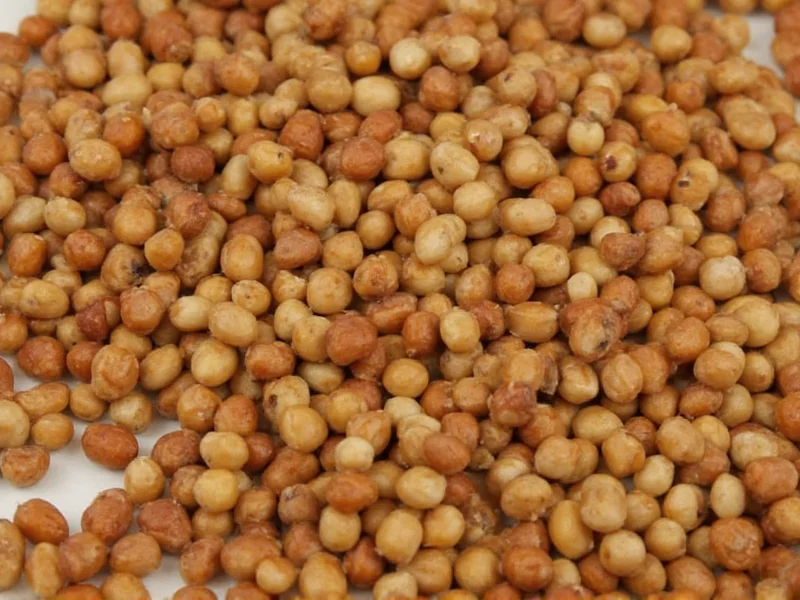Lentils are nutritional powerhouses packed with protein, fiber, and essential nutrients, but their gas-producing potential is a common concern. Understanding why this happens and how to manage it can help you enjoy lentils without discomfort. This article examines the science behind lentils and digestive gas, factors that influence individual reactions, and practical strategies to minimize potential issues while maximizing nutritional benefits.
The Science Behind Lentils and Gas Production
Lentils contain significant amounts of dietary fiber and certain carbohydrates called oligosaccharides, particularly raffinose. Unlike simple sugars, humans lack the enzyme alpha-galactosidase needed to break down these complex carbohydrates in the small intestine. When these compounds reach the large intestine, gut bacteria ferment them, producing hydrogen, carbon dioxide, and sometimes methane gas as byproducts.
This natural fermentation process explains why do lentils cause bloating and gas in some individuals. The amount of gas produced varies based on several factors including your unique gut microbiome composition, how frequently you consume legumes, and your overall digestive health.
Factors Influencing Gas Production from Lentils
Not everyone experiences gas after eating lentils. Several variables determine whether will eating lentils cause gas for you specifically:
| Factor | Impact on Gas Production |
|---|---|
| Individual gut microbiome | People with more gas-producing bacteria may experience more discomfort |
| Frequency of consumption | Regular consumption typically reduces gas over time as gut adapts |
| Preparation method | Proper soaking and cooking reduces gas-causing compounds |
| Amount consumed | Smaller portions initially minimize digestive disruption |
| Overall diet | High-fiber diets generally support better adaptation to legumes |
Benefits vs. Digestive Discomfort
While why do lentils make you gassy is a valid question, it's important to weigh this against lentils' substantial health benefits. A single cup of cooked lentils provides approximately 18 grams of protein, 15 grams of fiber, and significant amounts of iron, folate, and manganese. Research shows regular legume consumption is associated with reduced risk of heart disease, improved blood sugar control, and better weight management.
For most people, the digestive system adapts to lentils within a few weeks of regular consumption. The initial gas production often decreases significantly as your gut microbiome adjusts to the increased fiber intake. This adaptation process is why nutritionists typically recommend how to prevent gas from lentils by starting with small portions and gradually increasing intake.
Practical Strategies to Reduce Gas from Lentils
If you're concerned about do lentils cause gas and bloating, several evidence-based approaches can help minimize discomfort:
Proper Preparation Techniques
Soaking dried lentils for 8-12 hours before cooking and discarding the soaking water removes some oligosaccharides. Adding kombu seaweed during cooking introduces enzymes that help break down gas-producing compounds. Thorough cooking also improves digestibility.
Gradual Introduction to Your Diet
Start with 1/4 to 1/2 cup of cooked lentils 2-3 times per week, gradually increasing frequency and portion size over several weeks. This allows your gut bacteria to adapt incrementally, reducing the likelihood of excessive gas production.
Digestive Enzyme Support
Over-the-counter alpha-galactosidase supplements (like Beano) taken before meals can help break down oligosaccharides before they reach the large intestine. These have been shown to reduce gas production from legumes in multiple studies.
Strategic Food Pairing
Consuming lentils with easily digestible foods and avoiding combining them with other high-gas-producing foods (like cruciferous vegetables) in the same meal can reduce overall digestive burden. Drinking plenty of water throughout the day also supports proper fiber digestion.
When to Consult a Healthcare Professional
While gas from lentils is usually normal, persistent or severe digestive issues might indicate an underlying condition. Consult a healthcare provider if you experience:
- Severe pain that doesn't resolve
- Blood in stool
- Unintended weight loss
- Symptoms that persist despite dietary modifications
These could indicate conditions like irritable bowel syndrome (IBS), inflammatory bowel disease (IBD), or food intolerances that require professional management beyond simple dietary adjustments for will lentils cause gas problems.
Conclusion
Lentils can cause gas due to their natural carbohydrate composition, but this shouldn't prevent most people from enjoying their substantial health benefits. By understanding why lentils cause gas and how to prevent it through proper preparation, gradual introduction, and strategic consumption, you can incorporate these nutrient-dense legumes into your diet with minimal discomfort. Remember that temporary digestive changes are often a sign of positive adaptation as your gut microbiome becomes more diverse and resilient.











 浙公网安备
33010002000092号
浙公网安备
33010002000092号 浙B2-20120091-4
浙B2-20120091-4